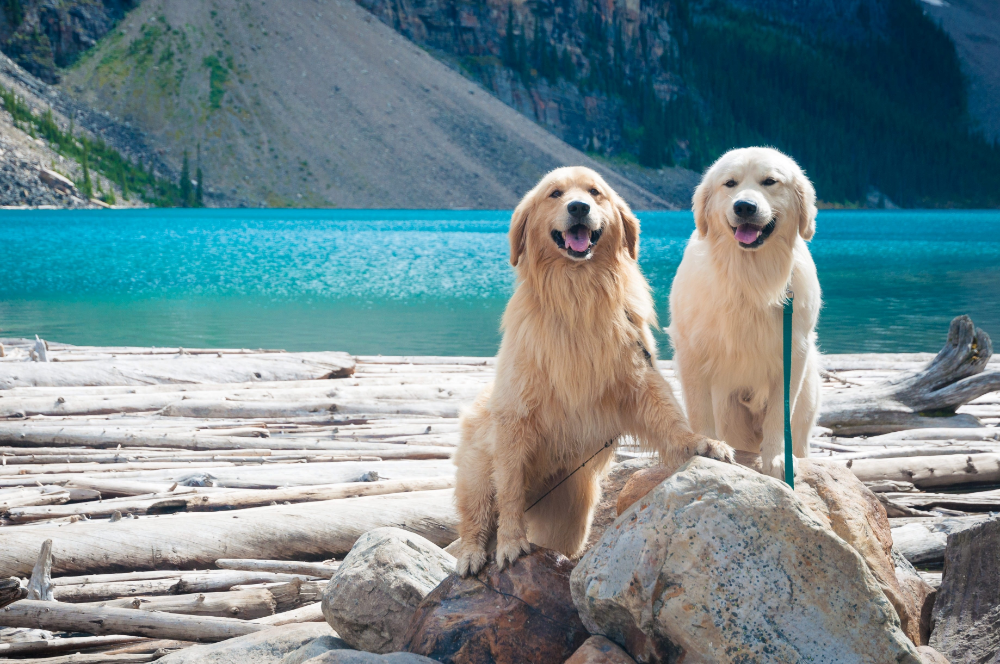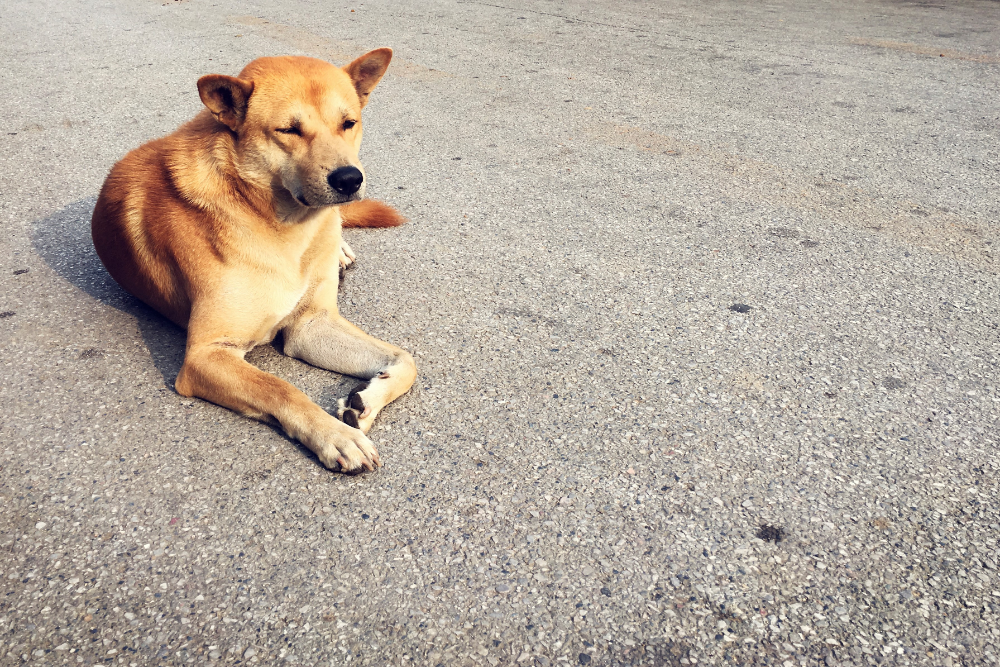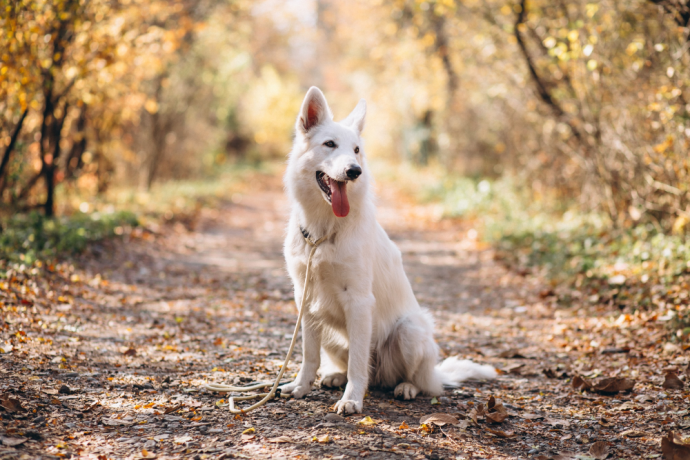My dog is Getting Old: Signs of Aging in Dogs (Vet Advice)
Written by:
Author: Dr. Kathryn Dench
Dr. Kathryn Dench is an experience veterinary with over 10 years' experience in small animal and exotic pet medicine. Kate qualified from Cambridge University Veterinary School in 2007. Kate has worked in a number of veterinary practices in the UK. She has extensive experience in the medical care of pet species, from dogs and cats to chickens and chameleons! In free time, Kate writes pet advice in order to ensure that owners are receiving the best possible information on how to care for their pets.
View all 9 articlesLearn about our editorial process and veterinary review board.
Viewed: 344
Updated on: 08/10/2022
The bittersweet truth of having pets as well-loved family members is that they rarely outlive us; sooner or later, we have to come to terms with the fact that our pets are getting older. In this article, we look at the signs of aging in our canine companions and what we, as their owners and closest friends, can do to make things easier.
When are Dogs considered old?
We all know that pets age faster than humans, and you may have heard that one human year is the equivalent of seven dog years. While that may be a helpful comparison in general terms, actually different breeds of dog have different life expectancies and age at different rates. Smaller breeds of dogs, such as terriers, may live into their late teens, whereas giant breed dogs like the Great Dane have shorter life expectancies and are already considered elderly at the age of 5 or 6 [1].
With so much variation between dogs of different breeds, and between individuals, it difficult to say an eWith so much variation between dogs of different breeds, and between individuals, it difficult to say an exact age at which a dog is “old”. So rather than focusing on the numbers, it is more important to be in tune with your own canine friend’s routine and behavior, so you can spot any changes or signs of aging and be prepared to help them.
What are the Signs of Aging in Dogs?
There are several changes in behavior that you might notice as your dog gets older [2]. These may include:
- Slowing down
- Being more irritable
- Seeming confused or anxious
- Poor hearing or vision
- Drinking and urinating a lot
- Toileting in the house
If you notice any of these symptoms in your pet, it is important to make an appointment with your vet for a check-up. Although these changes may be part of getting older, they may also be symptoms of underlying medical conditions that might need treatment (see next section). For example, slowing down when you are out on a walk together may just be a normal change with aging, but it could also be due to arthritis or a heart problem. Similarly, a previously house-trained dog starting to toilet indoors may be a sign of old age, but could also be a symptom of a urine infection or bowel problem that needs treatment. Your vet will be able to give your older canine a check-up and advise you on their condition.
READ MORE: Toilet Training Dog
What medical conditions commonly affect older dogs?
In the same way that people can be more prone to illnesses as they get older, pets are also more likely to have medical conditions as they age. This is partly because of ‘wear and tear’ on the body and its organs over the years, and can also be a result of a weakened immune system in older animals.
READ MORE: How to tell if a Dog has Fleas
Some of the most common Conditions include
1. Arthritis
Older pets are prone to joint conditions, most often arthritis of the elbows or hips. This may make your dog slow down or be reluctant to go for a walk; you may also notice them limping. Arthritis is painful and can also make your pet irritable. The joints’ changes are irreversible, but fortunately, many dogs gain some relief with pain medication that your vet can prescribe.
2. Dental problems
Dogs are susceptible to developing tooth decay and cavities over time, in the same way that they are. These problems can make your dog irritable and reluctant to eat, or you may notice excessive saliva from their mouth or a bad smell. It is important to get treatment quickly for tooth infections, not only because they are painful for your pet but also because the bacteria in the infection can cause problems in other parts of your dog’s body like their kidneys. Your vet can also clean your dog’s teeth under anesthetic and remove any teeth that are causing pain. To reduce your pet’s chances of teeth problems, try brushing their teeth every day to remove food remnants, plaque, and bacteria.
READ MORE: Best Brush for Australian Shepherd
3. Kidney problems
Kidneys are the body’s filtering system and the years take their toll on these important organs. More than half the kidney tissue can be damaged before there are any symptoms, but kidneys cannot repair themselves so once we are aware of kidney problems, our options are based on managing and supporting the remaining functioning kidney tissue to do its job well. Symptoms of kidney problems include drinking and urinating more than normal and may even cause your dog to feel nauseous or vomit. Blood tests can help your vet assess your pet’s kidney function and advise you on how to manage their condition.
4. Infectious diseases
Older animals have a weaker immune system than those in their prime, so they are not as effective at fighting off germs. Contagious diseases that produce only mild symptoms in a younger animal, may lead to more severe illness in an older animal. It is important to make sure your elderly canine’s vaccinations are up to date and take them to the vet at early signs of any illness.
5. Lumps
One concern in our older dogs is the possibility of developing cancer. It is very common for dogs to get lumps as time goes on, many of which are benign fatty lumps and nothing to worry about. But some lumps aren’t so innocent, and the sooner we do something about them, the better. Ignoring lumps because we assume they are a normal part of aging or because we are scared of the possible results isn’t doing our canine companion any favors. It’s a good idea to regularly run your hands over your dog for anything that feels different and get any lumps and bumps checked at the earliest opportunity.
If you notice any symptoms or changes in your pet, particularly as they get older, make an appointment with your vet to ensure there is no underlying medical cause and see what medical support is available to help control the symptoms your pet is experiencing.
How do you cope with an old Dog?
Apart from getting appropriate medical care for any illnesses and conditions your dog may experience, there are several things we can do to make life easier for our dogs in their older age. Most of these suggestions are based on accepting the changes in our elderly canines and finding ways to accommodate them to minimize their impact.
READ MORE: Indoor Dog Potty Reviews
1. Exercise
Older dogs need to stay active, but we also have to be aware of their limitations. Taking routine walks of a regular length is recommended, trying to keep the amount of exercise each day the same. An older pet who has very little exercise during the week and then goes for a three-hour hike on the weekend is more likely to show joint pain afterward. For dogs with arthritis, swimming can be an excellent form of exercise to maintain fitness without putting excessive pressure on the joints. Specialist canine hydrotherapy centers exist to cater to dogs recovering from injuries or looking for gentle exercise as they get older.
2. Incontinence
Incontinence in an older dog can be very frustrating, particularly when a dog has been house trained for several years. It is important to remember that your pet isn’t doing it on purpose and is often just as frustrated as we are with the changes happening to them. Making sure your dog has more frequent access outdoors may help avoid accidents in the house. Some dogs also benefit from having a large toilet tray with absorbent pads in the house, in case they are not able to wait overnight or until their next walk for toileting.
3. Anxiety and Aggression
Most aggression in older dogs arises from anxiety and fear. To reduce stress in your canine friend, make sure they always have access to a safe quiet place where they can retreat where they will not be disturbed. A regular daily routine can also help with anxiety, as your dog will know what to expect throughout the day. Your vet or pet store may recommend hormone-based calming sprays and diffusers which can have a very positive effect on some dogs.
4. Diet
As your dog gets older, they may need a different diet from when they were younger. Many commercial diets for older dogs are designed to support their aging liver and kidneys as well as provide additional joint support. If your pet has difficulty eating because of mouth pain, offer softer food such as canned food or biscuits soaked in water. If they frequently suffer from an upset stomach, plain food such as chicken, fish, rice, and potatoes may help. Remember that if your dog’s exercise has decreased in recent months or years, their food intake should be reduced to avoid becoming overweight.
You can find more suggestions on how to make life easier for your older dog at the Old Dog Haven website.[3]
READ MORE: Best Senior Dog Food
How do you know if your Dog is dying of old age?
While we all know death is an inevitable part of life, it is difficult to think about our own pets getting old and dying. Nevertheless, it is important to have an idea of what to expect. Some elderly dogs pass away suddenly or in their sleep. For others, as their organs age and start to fail, they can get sick and eventually, their bodies are not able to cope anymore. As owners, we have a responsibility to keep our dogs’ quality of life in mind, and the time may come when we have to decide to have them euthanized to stop from suffering.
The death of a beloved pet is always distressing. A sudden death comes as a shock, and even when a dog has been unwell for a while or we have had to have them euthanized, the loss is no less painful. This loss can also be difficult to explain to children in the family, for whom this may be their first encounter with death. You may want to speak to your veterinary practice who will offer support for owners who have recently lost a pet, or look at online resources.[4]
Conclusion
Coming to terms with the fact that our pet getting old is always difficult. But suppose we are on the look-out for the signs of aging in our own canine friend. In that case, we can ensure we get the appropriate veterinary care they may need, adjust our lifestyle together to accommodate their changing needs, and ensure their twilight years are as happy and comfortable as possible.
Article Sources:
- Life Expectancy in Dogs: https://www.caninejournal.com/life-expectancy-of-dogs/
- Aging in dogs: https://en.wikipedia.org/wiki/Aging_in_dogs
- Old Dog Haven website: https://olddoghaven.org/7-things-your-senior-dog-would-like-to-tell-you/
- Coping with losing a pet: https://www.helpguide.org/articles/grief/coping-with-losing-a-pet.htm
 Dog Veterinary Tips Dog Losing Hair Around the Eyes: Causes, Diagnosis and Treatment (Vet Advice)
Dog Veterinary Tips Dog Losing Hair Around the Eyes: Causes, Diagnosis and Treatment (Vet Advice) - 5707
- 0
 Dog Care White Specks In Dog Poop: What Are The Little White Specks In Dog Poop? (Vet Advice)
Dog Care White Specks In Dog Poop: What Are The Little White Specks In Dog Poop? (Vet Advice) - 659
- 0
 Dog Veterinary Tips Sick Puppy 101: How to know if your Puppy is Sick? (Vet Advice)
Dog Veterinary Tips Sick Puppy 101: How to know if your Puppy is Sick? (Vet Advice) - 1438
- 0
 Dog Veterinary Tips Stem Cell Therapy for Dogs: Conditions Treated, Efficacy, and Cost
Dog Veterinary Tips Stem Cell Therapy for Dogs: Conditions Treated, Efficacy, and Cost - 1048
- 0
 Dog Veterinary Tips Why is my Dog throwing up: Causes and Preventing (Veterinary Advice)
Dog Veterinary Tips Why is my Dog throwing up: Causes and Preventing (Veterinary Advice) - 23424
- 5
 Dog Care Why Is My Dog Bleeding From Its Butt? Causes and treatment of rectal bleeding in the dog
Dog Care Why Is My Dog Bleeding From Its Butt? Causes and treatment of rectal bleeding in the dog - 22076
- 0
 Dog Care My Dog Keeps Scratching His Mouth: Reasons Why Your Dog Scratching Face
Dog Care My Dog Keeps Scratching His Mouth: Reasons Why Your Dog Scratching Face - 17561
- 1






















